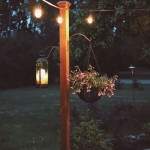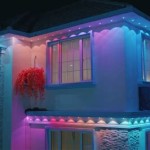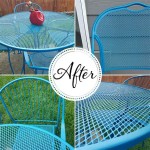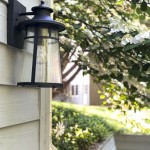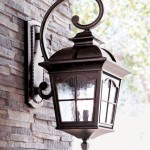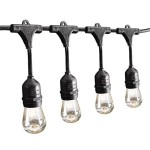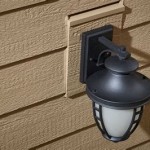Is Outdoor Furniture Waterproof? A Comprehensive Guide
The question of whether outdoor furniture is truly waterproof is a complex one, often misunderstood. While the term "waterproof" implies complete and impenetrable protection against water, in the context of outdoor furniture, the reality is more nuanced. The longevity and performance of outdoor furniture depend on various factors, including the materials used, the construction methods employed, and the level of exposure to the elements. Understanding these factors is crucial for making informed decisions about purchasing and maintaining outdoor furniture.
The market offers a wide range of outdoor furniture, each designed to withstand different levels of moisture and environmental stress. Classifying furniture as simply "waterproof" or "not waterproof" is an oversimplification. Instead, it is more accurate to consider the water resistance properties of different materials and construction techniques and how these properties affect the furniture's ability to withstand prolonged exposure to rain, humidity, and other forms of moisture.
Materials play a critical role in determining the water resistance of outdoor furniture. Some materials are inherently more resistant to water damage than others. Understanding the properties of common outdoor furniture materials is the first step in evaluating their suitability for specific environments and levels of exposure to moisture.
Key Point 1: Understanding Material Properties and Water Resistance
Several materials are commonly used in outdoor furniture construction, each possessing unique properties that affect its water resistance. These materials include, but are not limited to, various types of wood, metals like aluminum and steel, synthetic materials such as plastic and resin wicker, and fabrics used for cushions and upholstery.
Wood: While aesthetically desirable, wood is inherently vulnerable to water damage unless properly treated. Untreated wood can absorb moisture, leading to swelling, warping, cracking, and ultimately, rot. Certain types of wood, such as teak, cedar, and redwood, are naturally more resistant to water due to their high oil content. These woods are often used in high-end outdoor furniture. However, even these woods require periodic sealing or oiling to maintain their water-resistant properties and prevent weathering. Other woods, like pine or fir, require pressure treating and sealing to extend their lifespan and prevent water damage. Pressure treating infuses the wood with chemicals that inhibit rot and insect infestation. Regular sealing with a water-repellent sealant is still necessary to minimize water absorption.
Metals: Metals used in outdoor furniture, such as aluminum and steel, also have varying degrees of water resistance. Aluminum is naturally resistant to rust, making it a popular choice for outdoor furniture frames. However, aluminum can corrode over time, especially in saltwater environments. Powder coating aluminum provides an additional layer of protection against corrosion. Steel, on the other hand, is susceptible to rust. To mitigate this, steel furniture is typically treated with rust-inhibiting coatings or powder coatings. These coatings create a barrier between the steel and the environment, preventing oxidation and rust formation. However, if these coatings are scratched or damaged, the underlying steel is exposed and can begin to rust.
Plastics and Resins: Synthetic materials like plastic and resin wicker are generally highly resistant to water. These materials do not absorb water, making them impervious to rot and decay. Plastic furniture is often made from recycled plastic, making it an environmentally friendly option. Resin wicker is a synthetic material designed to mimic the look of natural wicker. It is typically made from polyethylene or PVC and is woven around a metal frame. Resin wicker is much more durable and water-resistant than natural wicker. However, the frame underneath may be vulnerable and should be checked for proper rust proofing or be made of aluminum.
Fabrics: Outdoor furniture cushions and upholstery are often made from synthetic fabrics like acrylic, polyester, or olefin. These fabrics are designed to be water-resistant and fade-resistant. However, even these fabrics are not completely waterproof. They can repel water to a certain extent, but prolonged exposure to moisture can lead to water penetration. This can result in mold and mildew growth inside the cushions. To prevent this, it is important to choose cushions made with quick-drying foam and to store cushions indoors or cover them during periods of heavy rain.
The construction methods used to assemble outdoor furniture also play a crucial role in its water resistance. Even if the materials themselves are water-resistant, poorly designed or constructed furniture can still be vulnerable to water damage.
Key Point 2: The Importance of Construction and Design
The way outdoor furniture is constructed significantly impacts its ability to withstand water and other environmental elements. Factors like joint construction, drainage mechanisms, and the overall design contribute to the furniture's longevity.
Joints: The joints where different pieces of the furniture are connected are often the weakest points in terms of water resistance. Water can seep into these joints, leading to corrosion or rot. High-quality outdoor furniture uses durable, weather-resistant fasteners like stainless steel screws and bolts. The joints are often sealed with waterproof adhesives to prevent water penetration. For wooden furniture, mortise and tenon joints or dovetail joints provide a strong and water-resistant connection. For metal furniture, welded joints are generally stronger and more water-resistant than bolted joints.
Drainage: Proper drainage is essential for preventing water from pooling on the surface of the furniture. Tables and chairs should be designed with slight slopes or gaps to allow water to run off. Cushions should be designed with drainage holes or breathable fabric to allow water to escape. Furniture with enclosed spaces, such as storage boxes or benches with lids, should have drainage holes to prevent water from accumulating inside. Without adequate drainage, water can stagnate, leading to mold and mildew growth.
Design: The overall design of the furniture also affects its water resistance. Furniture with intricate carvings or complex designs can be more difficult to clean and maintain, making it more susceptible to water damage. Simpler designs with smooth surfaces are easier to wipe down and keep dry. Furniture that is designed to be easily disassembled for storage is also beneficial. This allows you to store the furniture indoors during periods of inclement weather, extending its lifespan.
Beyond the materials and construction, proper maintenance is crucial for preserving the water resistance of outdoor furniture. Even the most durable furniture will eventually succumb to the elements if not properly cared for.
Key Point 3: Maintenance and Prolonging Furniture Lifespan
Regular maintenance is essential for extending the life of outdoor furniture and preserving its water-resistant properties. This includes cleaning, sealing, and protecting the furniture from the elements.
Cleaning: Regular cleaning removes dirt, debris, and mildew that can damage the furniture's surface. The frequency of cleaning will depend on the environment and the level of exposure to the elements. In general, outdoor furniture should be cleaned at least once a month. Use a mild soap and water solution and a soft brush or cloth to clean the furniture. Avoid using harsh chemicals or abrasive cleaners, as these can damage the finish. For stubborn stains or mildew, use a specialized outdoor furniture cleaner.
Sealing: Wood furniture should be sealed or oiled regularly to maintain its water-resistant properties. The type of sealant or oil will depend on the type of wood. Teak oil is commonly used for teak furniture, while other types of wood may require a different type of sealant. Apply the sealant or oil according to the manufacturer's instructions. Metal furniture should be inspected regularly for scratches or damage to the coating. If scratches are found, they should be repaired immediately to prevent rust. You can use a rust-inhibiting primer and paint to repair scratches on steel furniture. Aluminum furniture can be cleaned with a specialized aluminum cleaner to remove oxidation.
Protection: Protecting outdoor furniture from the elements is crucial for extending its lifespan. This can be done by covering the furniture when not in use or by storing it indoors during periods of inclement weather. Outdoor furniture covers are available in a variety of sizes and materials. Choose a cover that is waterproof and breathable. Store cushions indoors or in a waterproof storage container when not in use. This will prevent them from getting wet and developing mold and mildew. During the winter months, it is best to store outdoor furniture indoors to protect it from freezing temperatures and snow. This will prevent the furniture from cracking or warping.
In conclusion, determining if outdoor furniture is "waterproof" is not a simple yes or no answer. It depends on the materials used, the quality of construction, and the level of maintenance provided. Understanding these factors allows consumers to make informed choices and properly care for their outdoor furniture, ensuring its longevity and enjoyment for years to come. The term "water-resistant" is a more accurate descriptor, as most outdoor furniture is designed to withstand some degree of moisture but is not impervious to prolonged exposure.

How To Waterproof Outdoor Furniture The Easy Way Maison De Pax

Waterproof Outdoor Furniture With Modern And Sophisticated Designs

Waterproof Outdoor Furniture With Modern And Sophisticated Designs

Waterproof Outdoor Furniture With Modern And Sophisticated Designs

Is Patio Furniture Waterproof 4patio Com

Your Complete Guide To Waterproof Outdoor Cushions Fig Leaf

Is Patio Furniture Waterproof Ions

5 Tips How Companies Make Their Wooden Outdoor Furniture Waterproof Rocking

Luxury Outdoor Sofas All Year Round Inspirations Whole Blog

Is Rattan Furniture Waterproof Skyline Design
Related Posts
